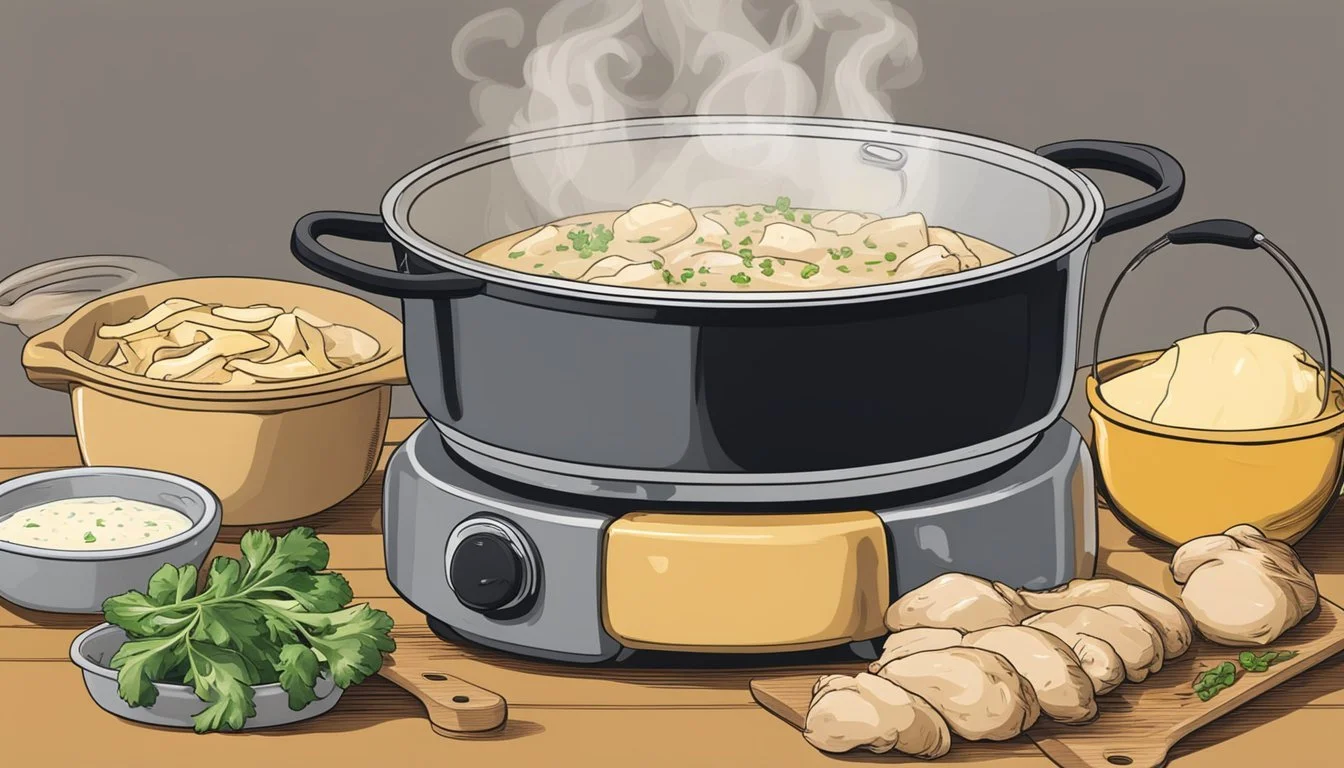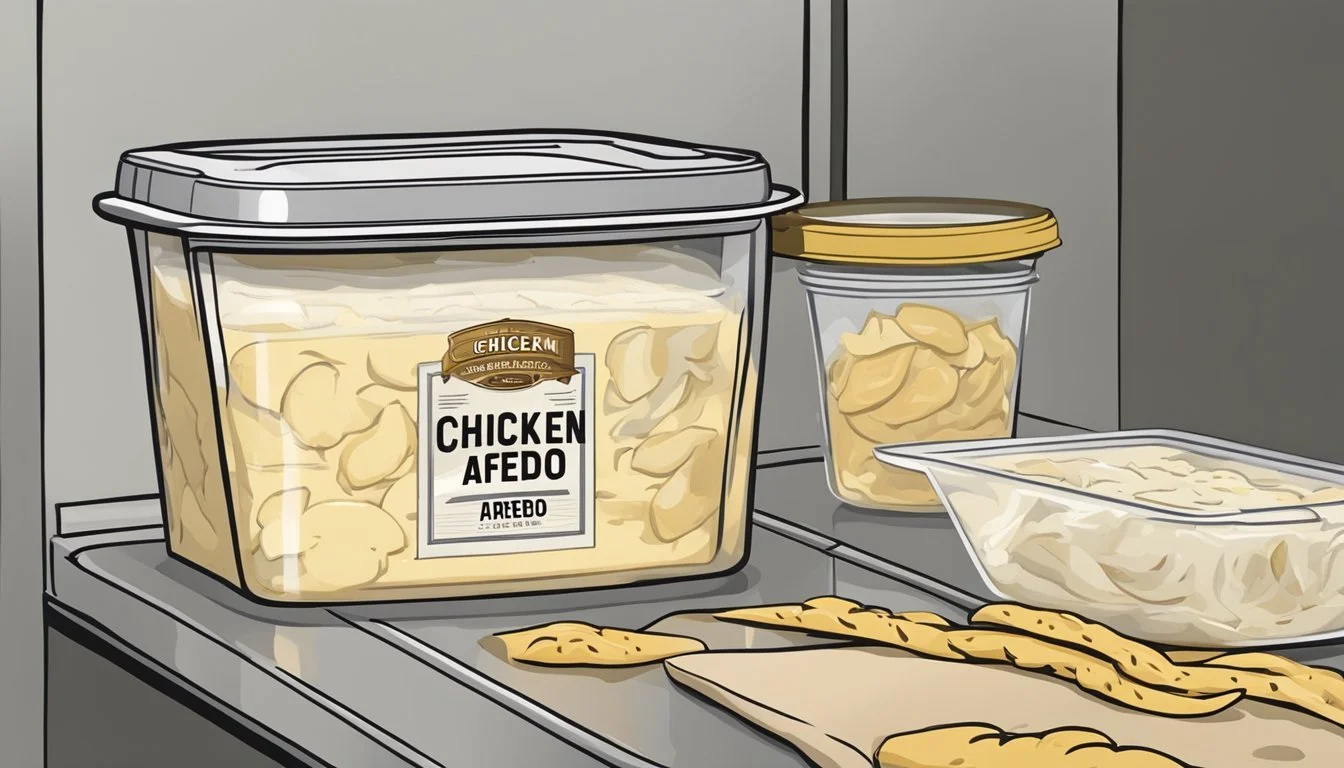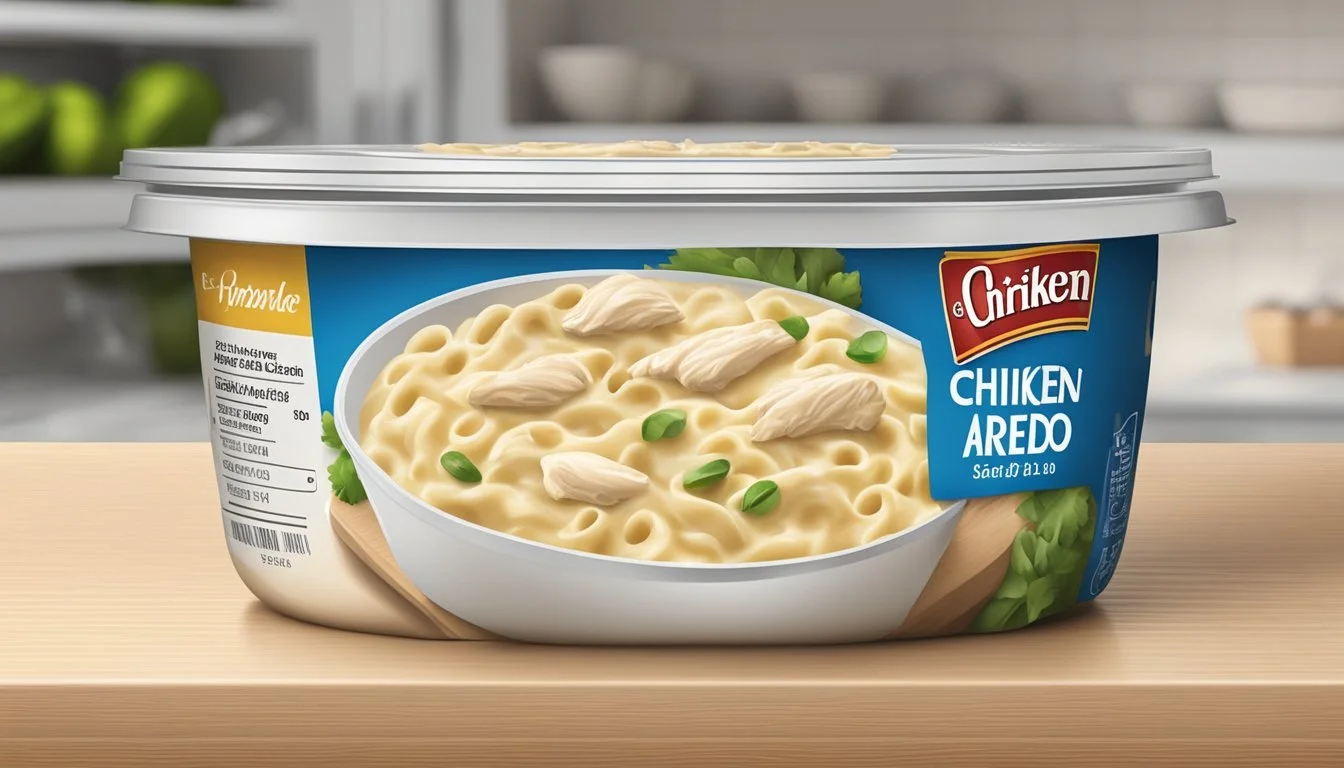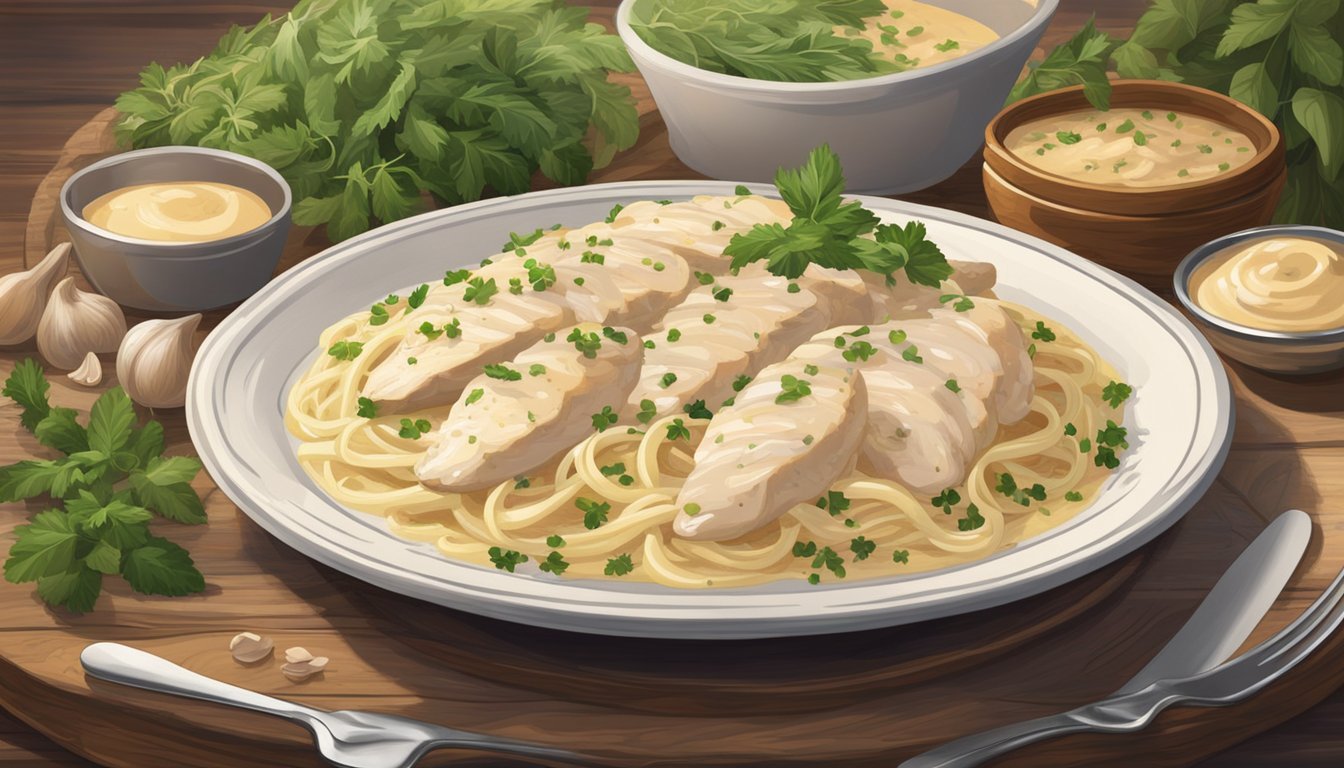How Long Does Chicken Alfredo (Non-Pasta Variant) Last?
Storage Tips and Safety
Chicken Alfredo, whether with pasta or as a standalone dish, is a cherished comfort food for many. When it comes to storage, knowing how long this creamy delight lasts is crucial for ensuring both taste and safety. Chicken Alfredo without pasta can be stored in the refrigerator for up to 3-4 days, provided it is kept in an airtight container.
For those looking to extend its shelf life, freezing is a great option. Frozen Chicken Alfredo can last for 2-3 months, though it’s best to consume it sooner for optimal quality. Remember to always thaw it in the refrigerator overnight for even defrosting.
When reheating, it’s essential to heat it to an internal temperature of 165°F (74°C) to ensure it's safe to eat. Signs that your Chicken Alfredo has gone bad include an unpleasant odor, an unusual taste, or visible mold. If any of these are present, it’s best to discard the dish.
Understanding Chicken Alfredo
Chicken Alfredo is a popular comfort food that combines chicken and a rich Alfredo sauce. Its composition, nutritional content, and various adaptations make it a versatile and beloved dish.
Components of Chicken Alfredo
Chicken Alfredo is primarily made up of chicken and Alfredo sauce. The sauce typically consists of cream, butter, and Parmesan cheese.
To enhance flavor, ingredients such as garlic and parsley are often added. The dish is sometimes combined with vegetables like broccoli to increase its nutritional value and diversify its texture.
Some variations of Chicken Alfredo also include other types of cheese for added richness.
Nutritional Profile
Chicken Alfredo is known for its rich and creamy texture, owing to its high-fat content derived from cream, butter, and Parmesan cheese. The protein mainly comes from the chicken, while the sauce contributes the majority of the dish's fat and carbohydrates.
Depending on the recipe, Chicken Alfredo may also contain varying amounts of fiber if vegetables like broccoli are included. It can be adapted to fit specific dietary needs like gluten-free by using alternative ingredients.
Variants of Chicken Alfredo
There are several variants of Chicken Alfredo to cater to different dietary preferences.
Gluten-free versions can be made using gluten-free pasta or by replacing pasta with zucchini noodles or cauliflower rice. Keto or low-carb adaptations often substitute traditional pasta with these alternatives as well.
Another variant is the Non-Pasta Chicken Alfredo, which focuses on the chicken and sauce, skipping the pasta entirely. This variant can be paired with vegetables like cauliflower or broccoli for a lighter, yet still satisfying meal.
Preparation Techniques
Proper preparation is crucial for ensuring that chicken Alfredo (non-pasta variant) is safe to eat and delicious. This involves cooking chicken to the correct internal temperature, creating a homemade Alfredo sauce, and combining the ingredients effectively.
Cooking the Chicken
Cook the chicken breasts to an internal temperature of 165°F (74°C) to ensure safety. Use a skillet and heat two tablespoons of olive oil on medium-high heat.
Season the chicken with salt and pepper before placing it in the hot skillet. Pan-fry the chicken for 5-7 minutes on each side until golden brown and cooked through.
Once cooked, let the chicken rest for a few minutes before slicing it into tender pieces. Properly cooked chicken holds its moisture and flavors well, which is critical for this dish.
Creating Alfredo Sauce
To make a rich and creamy Alfredo sauce, start by melting three tablespoons of butter in a saucepan over medium heat. Add two cloves of minced garlic and cook until fragrant.
Next, pour in one cup of heavy cream and bring the mixture to a gentle simmer. Stir continuously to avoid scorching.
Gradually add one cup of grated Parmesan cheese, whisking constantly until the cheese melts and the sauce becomes smooth. Ensure there are no lumps. This homemade Alfredo sauce will be the base of your dish, creating a flavorful and creamy texture.
Combining Ingredients
Once the chicken is cooked and the Alfredo sauce is ready, combine them in a single skillet for a cohesive dish. Add the sliced chicken to the saucepan with the Alfredo sauce, stirring gently to coat each piece.
If you're meal prepping, portion the chicken Alfredo into individual containers. Store in the refrigerator for up to 3-4 days. When ready to eat, reheat thoroughly until the internal temperature reaches 165°F (74°C).
Using these preparation techniques ensures that your chicken Alfredo is both delicious and safe to consume.
Storage Tips
Proper storage is crucial to maintain the safety and quality of chicken alfredo. The following practices ensure your dish stays fresh, whether refrigerated or frozen, and reheats properly.
Refrigeration Practices
Chicken Alfredo should be stored in sealed containers to prevent air exposure and contamination. Use shallow, airtight containers or resealable plastic bags for optimal airflow. Labeling each container with the date ensures you consume it within the recommended period.
In the refrigerator, cooked chicken alfredo can last 3-4 days. Ensure the refrigerator is set at 40°F (4°C) or below to maintain freshness. Avoid leaving the dish at room temperature for more than two hours to minimize bacterial growth.
Freezing for Longevity
For extended storage, freezing chicken alfredo is highly effective. Use freezer-safe containers or heavy-duty freezer bags to prevent freezer burn. Removing as much air as possible before sealing helps preserve consistency and quality.
Store frozen chicken alfredo for 2-3 months. Label each container with the freezing date. When ready to use, defrost it in the refrigerator overnight or use the defrost setting on a microwave. Avoid countertop defrosting to mitigate bacterial risks.
Reheating Guidelines
When reheating, bring chicken alfredo to an internal temperature of 165°F (74°C). This ensures any potential bacteria are killed. Use a microwave, oven, or skillet for reheating.
In the microwave, reheat in short intervals, stirring occasionally to maintain even heating. For the oven, cover the dish with aluminum foil and heat at low temperature until warmed through. Using a skillet, reheat gently over low heat to prevent drying out the pasta.
Safety and Shelf Life
Chicken Alfredo, when properly stored, can be enjoyed for several days without compromising its taste or safety. Understanding how to identify spoilage and knowing the optimal consumption window is crucial.
Identifying Spoilage
Spoiled Chicken Alfredo typically shows clear signs. Mold growth is a visible indicator that the dish is no longer safe to eat. Check both the sauce and chicken for any signs of discoloration or fuzz. Smell is also a strong indicator; if the Alfredo smells off or sour, it should be discarded.
Texture changes are another sign. If the sauce becomes overly lumpy or the chicken feels slimy to the touch, it's a sign of spoilage. Additionally, a sour taste indicates that the dish is no longer good. Always err on the side of caution and discard any chicken Alfredo that shows these signs to avoid foodborne illness.
Recommended Consumption Window
For optimal freshness and safety, store Chicken Alfredo in an airtight container in the refrigerator at or below 40°F (4°C). It is best consumed within 3-4 days. Refrigerating promptly after cooking or reheating maximizes its shelf life.
Freezing extends the shelf life to 2-3 months. Use airtight containers or freezer bags to prevent freezer burn and maintain quality. When ready to consume, thaw in the refrigerator overnight for best results. Avoid leaving Chicken Alfredo out at room temperature for more than 2 hours to prevent bacterial growth.
Serving Suggestions
Choosing the right side dishes can elevate chicken alfredo into a well-rounded meal. Paying attention to presentation ensures this dish is not only delicious but also visually appealing.
Complementary Side Dishes
Garlic Bread: A classic choice, garlic bread brings a crispy, buttery contrast to the creamy chicken alfredo.
Side Salad: A fresh green salad with a light vinaigrette can balance the richness of the main dish. Consider using mixed greens, cherry tomatoes, and thinly sliced red onions.
Roasted Veggies: Roasted vegetables such as carrots, broccoli, or bell peppers add color and nutrients. Season with olive oil, salt, and pepper for a simple yet flavorful side.
*Dinner Rolls: Soft dinner rolls or a baguette offer an alternative to garlic bread without overpowering the main dish.
Presentation Tips
Serving Platter: Present the chicken alfredo on a large serving platter to make it the centerpiece of the meal.
Garnishing: Garnish with chopped fresh parsley or basil for a pop of color and added freshness. A light sprinkle of grated Parmesan can also enhance the visual and flavor profile.
Individual Portions: If serving individually, use wide, shallow bowls. This contains the sauce better and highlights the dish’s creamy texture.
**Family Meal: For a family meal setting, arrange side dishes around the main platter. This encourages sharing and creates a communal dining experience.
Presentation Elements: Use contrasting plates and utensils to make the dish stand out. White plates can accentuate the colors of the chicken alfredo and sides.
Dietary Adjustments
For those looking to adapt chicken Alfredo to fit their dietary preferences, there are several adjustments that can be made. These variations include low-carb options, gluten-free alternatives, and vegetarian versions.
Low-Carb Alternatives
Low-carb diets, such as keto, can still accommodate chicken Alfredo with some tweaks. Replacing traditional pasta with zucchini noodles or cauliflower rice reduces the carb content significantly.
Zucchini noodles, also known as zoodles, provide a fresh, vegetable-based substitute that retains the dish's creamy essence. Cauliflower rice, with its neutral flavor, blends seamlessly with Alfredo sauce. Additionally, cream and cheese are staples in keto diets, allowing the Alfredo sauce to remain rich and indulgent.
Gluten-Free Options
For those requiring gluten-free meals, choosing gluten-free pasta or using a cornstarch thickener for the sauce can make chicken Alfredo accessible. Gluten-free pasta, made from rice or quinoa, offers a similar texture to wheat pasta without gluten.
To ensure the sauce is gluten-free, substitute flour with cornstarch. Cornstarch provides the necessary thickness while maintaining a smooth consistency. Ensure that all ingredients, including broths and spices, are certified gluten-free to avoid any contamination.
Vegetarian Variations
Vegetarians can enjoy Alfredo by using a no-chicken substitute and vegetable broth. Opt for plant-based protein sources such as tofu, tempeh, or chickpeas. These provide the necessary texture and protein without compromising the dish’s integrity.
Vegetable broth serves as a flavorful base for the sauce, replacing chicken stock. To achieve a creamy consistency, use alternatives like cashew cream or almond milk. These ingredients maintain the rich and comforting qualities of traditional Alfredo.
Pairing Flavors
Successful flavor pairing with chicken Alfredo involves carefully selecting seasonings, enhancing with cheese, and incorporating a variety of vegetables to elevate the dish's taste profile.
Selecting Seasonings
To bring out the best in chicken Alfredo, certain seasonings are essential. Italian seasoning blends, which generally include basil, oregano, and rosemary, impart a rich aromatic complexity.
Garlic powder, salt, and pepper are staples for enhancing the savory undertones. Basil, fresh or dried, can add a sweet, slightly spicy note that contrasts well with the creamy sauce.
In addition, a pinch of red pepper flakes can introduce a subtle heat without overwhelming the dish's delicate flavors. Seasonings should be balanced to avoid overshadowing the creamy richness of the Alfredo sauce.
Enhancing with Cheese
Cheese plays a crucial role in adding depth and richness to chicken Alfredo. Freshly grated parmesan is a classic choice that contributes a sharp, nutty flavor. It melts smoothly into the sauce, providing both flavor and a creamy texture.
Mozzarella cheese can be added for its mild taste and excellent melting properties. Its creaminess melds seamlessly with the other ingredients, enhancing the overall mouthfeel.
For those looking to experiment, Asiago or Romano cheeses can be used to introduce an additional layer of complexity. These cheeses offer unique flavors that can refine the dish's taste profile, making it more sophisticated.
Integrating Vegetables
Vegetables add nutritional value and textural variety to chicken Alfredo. Spinach is a popular choice, providing not only vitamins and minerals but also a slight bitterness that complements the rich sauce. It can be sautéed briefly before adding to the dish.
Broccoli florets, when steamed or roasted, offer a crunchy contrast and earthy flavor. Similarly, asparagus spears can be lightly cooked and incorporated for a tender, yet firm bite.
Green beans are another excellent addition, contributing a fresh, crisp texture and a subtle sweetness. These vegetables not only enhance the visual appeal of the dish but also ensure that it remains a satisfying, balanced meal.









